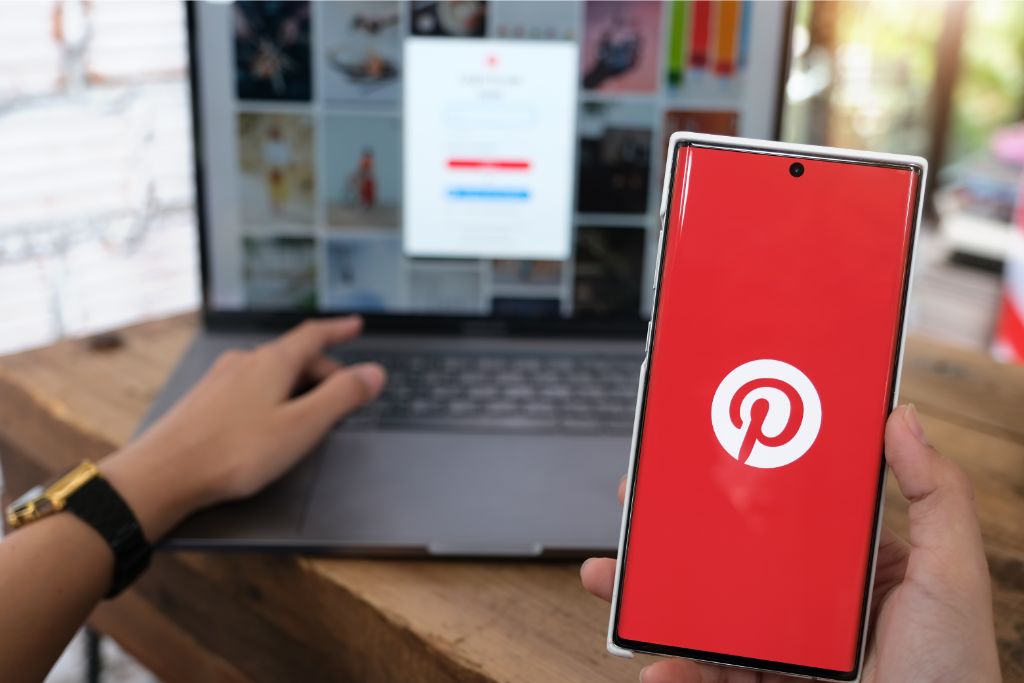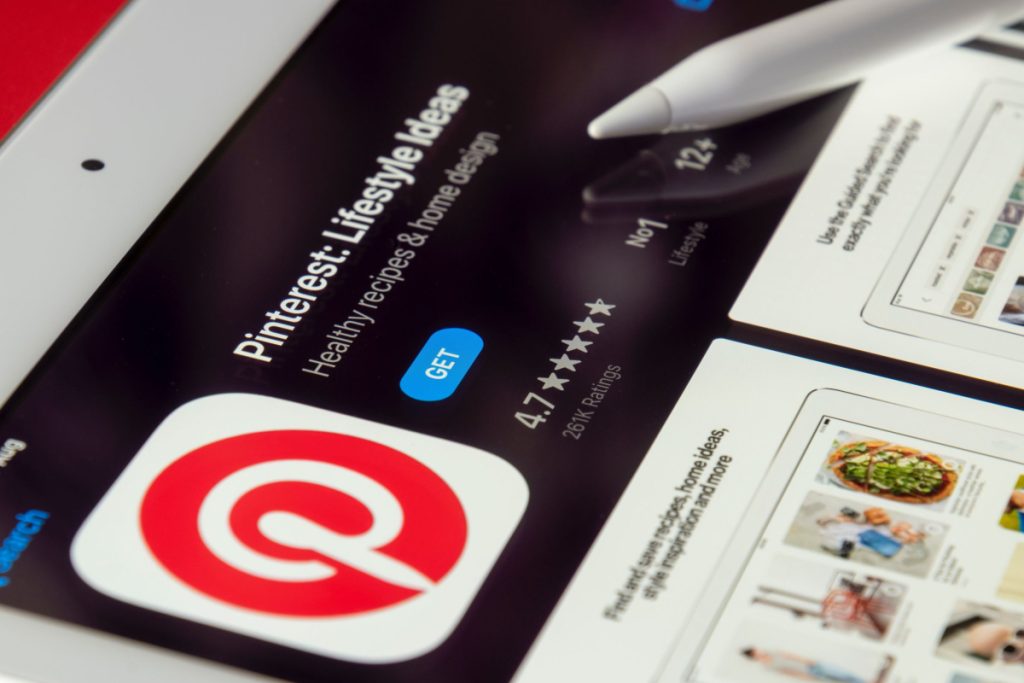Are you skeptical about the idea of making money on Pinterest? Many people see it as just a platform for inspiration and personal interests. But let me tell you, Pinterest can be a great income source.
In this article, I’m going to show you how you can strategically set up a Pinterest Business Account, create eye-catching pins, optimize pin descriptions, join group boards, drive traffic to your website or blog, utilize affiliate marketing and sponsored pins, and even explore the promoted pins advertising platform offered by Pinterest.
By following these comprehensive strategies, you can effectively monetize your presence on this social media platform and start earning money. So, let’s dive in and see how you can turn your Pinterest hobby into a profitable venture!
Table of Contents
- 1 Setting up a Pinterest Business Account
- 2 Creating Eye-Catching Pins
- 3 Optimizing Your Pin Descriptions
- 4 Joining and Utilizing Pinterest Group Boards
- 5 Driving Traffic to Your Website or Blog
- 6 Monetizing Your Pinterest Account With Affiliate Marketing
- 7 Collaborating With Brands for Sponsored Pins
- 8 Exploring Pinterest’s Promoted Pins Advertising Platform
- 9 BONUS
- 10 Frequently Asked Questions
- 10.1 What Are the Different Types of Pinterest Business Accounts Available, and How Do I Choose the Right One for My Business?
- 10.2 Can I Use Personal Pinterest Boards for My Business, or Do I Need to Create Separate Boards?
- 10.3 How Can I Make My Pins Stand Out Among the Millions of Others on Pinterest?
- 10.4 Are There Any Specific Strategies or Tips to Increase the Visibility and Reach of My Pins?
- 10.5 How Can I Effectively Track the Traffic and Engagement Generated by My Pinterest Account and Pins?
Setting up a Pinterest Business Account

Setting up a Pinterest Business Account involves creating a new account or converting an existing personal account into a business account. Businesses can benefit from utilizing the unique features and tools available on Pinterest to enhance their marketing strategies and gain valuable insights through Pinterest analytics tools.
To begin, businesses can create a new account specifically for their needs or convert an existing personal account into a business one. Creating a new account allows businesses to start fresh with branding and content, while converting an existing personal account maintains established followers and boards.
Once the account is set up, businesses can use various Pinterest marketing strategies to effectively promote their products or services. These strategies include creating visually appealing pins, optimizing pin descriptions with relevant keywords, collaborating with influencers or group boards, and engaging with the community by liking, commenting, and repinning others’ content.
Furthermore, using Pinterest analytics tools allows businesses to track the performance of their pins and overall account engagement. These tools provide valuable data on metrics such as impressions, clicks, saves, and audience demographics. By analyzing these insights regularly, businesses can refine their marketing strategies to reach their target audience better and drive more traffic to their website.
Creating Eye-Catching Pins

To enhance the visual appeal of pins, it is essential to employ attention-grabbing design elements and captivating imagery. Creating visually appealing pins is crucial for attracting users’ attention and increasing engagement on Pinterest. Designing compelling pin graphics involves carefully considering various elements such as color, typography, and composition.
Color plays a significant role in pin design, which can evoke certain emotions and attract attention. Using vibrant and contrasting colors can make pins stand out on users’ feeds. Typography also plays a crucial role in pin design by conveying information effectively. Choosing legible fonts that match the overall theme of the pin is important for ensuring readability.
The composition of a pin refers to how different design elements are arranged within the pin. A well-composed pin should have a clear focal point immediately grabs users’ attention. Visual hierarchy techniques like size, placement, and contrast help guide users’ eyes through the pin’s content.
Incorporating captivating imagery, such as high-quality photographs or illustrations relevant to the promoted content, can significantly enhance the visual appeal of pins. It is important to select images that are visually appealing, relevant, and representative of the message or product being conveyed.
In conclusion, creating visually appealing pins requires careful consideration of design elements such as color, typography, composition, and captivating imagery. By incorporating these aspects effectively into pin graphics, businesses can increase their chances of attracting user engagement on Pinterest.
| Element | Description | Example |
|---|---|---|
| Color | Evokes emotions and attracts attention | Vibrant colors |
| Typography | Conveys information effectively | Legible fonts |
| Composition | Arrangement of design elements within a pin | Clear focal point with visual hierarchy techniques |
Please note that this table serves only as an example representation; designs may vary depending on individual preferences and goals.
Optimizing Your Pin Descriptions
Optimizing pin descriptions involves strategically incorporating relevant keywords and concise yet informative language to increase the visibility and searchability of pins on Pinterest. By following these best practices, users can improve engagement and increase click-through rates for their pins.
- Use descriptive keywords: Including specific, relevant keywords in your pin descriptions helps Pinterest understand the content of your pins and increases the likelihood that they will be shown to users searching for related topics.
- Keep it concise: Pin descriptions should be succinct but provide enough information to entice users to click on the pin. Avoid lengthy paragraphs or excessive details that may overwhelm or bore potential viewers.
- Be informative: While being concise, make sure to include essential information about your pin. This can include product features, benefits, or other relevant details to help users understand what they can expect when clicking on your pin.
Joining and Utilizing Pinterest Group Boards
Joining and utilizing Pinterest group boards allows users to expand their reach and engage with a wider audience with similar interests. Group board strategy is an effective way for users to increase the visibility of their pins and drive traffic to their websites or online businesses. When joining group boards, it is important to carefully select boards that are relevant to one’s niche or industry. This ensures that the audience reached through these boards will be genuinely interested in the shared content.
Pinning strategies on group boards involves understanding the rules and guidelines each board administrator sets. Some group boards may require contributors to repin other members’ content, while others may have specific pinning schedules or restrictions on the number of pins allowed daily. Adhering to these rules maintains a positive relationship with other board members and maximizes exposure for one’s pins.
Additionally, it is essential to regularly monitor the performance of individual pins on different group boards. Analyzing metrics such as impressions, clicks, and saves can provide insights into which boards deliver the most engagement and drive traffic. By identifying successful pinning strategies, users can refine their approach and focus on participating in high-performing group boards to optimize their reach and ultimately achieve their goals on Pinterest.
Driving Traffic to Your Website or Blog
Driving traffic to a website or blog can be achieved by implementing effective strategies that attract and engage a wider audience with shared interests. Increasing engagement and analyzing traffic sources are two key aspects to consider to drive more visitors and potential customers to a website or blog.
Creating high-quality content relevant and valuable to the target audience is important to increase engagement. By providing helpful information, addressing their needs, and offering solutions, visitors are likelier to stay on the website or blog for longer. Additionally, interactive elements such as videos, quizzes, or polls can enhance engagement.
Analyzing traffic sources is crucial in understanding where visitors come from and how they find the website or blog. This information allows targeted marketing efforts toward specific channels that generate the most traffic. By monitoring metrics such as referral sources, search engine rankings, and social media insights, website owners can make data-driven decisions on which platforms to focus their efforts on.
Monetizing Your Pinterest Account With Affiliate Marketing

To monetize your Pinterest account and start building a passive income, one effective strategy is to incorporate affiliate marketing. Affiliate marketing is a performance-based marketing technique where individuals earn a commission for promoting other people’s products or services. It involves placing unique affiliate links on your Pinterest pins or within your pin descriptions, which track the traffic and purchases generated through those links.
Choosing relevant products or services that align with your niche and target audience is crucial to implementing successful affiliate marketing strategies on Pinterest. This ensures that your recommendations are authentic and resonate with your followers. Additionally, it is important to disclose that you may receive a commission for any purchases made through your affiliate links, as this promotes transparency and builds trust with your audience.
When creating content for affiliate marketing purposes on Pinterest, it is essential to focus on visually appealing images that capture attention and entice users to click through. Incorporating compelling call-to-actions can also help drive engagement and increase the likelihood of conversions.
Furthermore, continuously analyzing the performance of your affiliate pins using analytics tools provided by Pinterest can provide valuable insights into what types of products or services resonate most with your audience. This data can inform future content creation decisions and optimize revenue generation.
Collaborating With Brands for Sponsored Pins

Collaborating with brands for sponsored pins involves establishing partnerships between Pinterest users and companies, allowing the promotion of products or services through visually appealing content on the platform. This form of advertising has become increasingly popular as brands recognize the potential of leveraging Pinterest’s user base to reach their target audience.
To successfully find brand partnerships, Pinterest users can employ various strategies, including:
- Identifying relevant brands: Users should research and identify brands that align with their niche or target audience. By approaching brands that share similar interests or values, there is a higher likelihood of establishing successful collaborations.
- Building a strong profile: A well-curated and engaging Pinterest profile is crucial in attracting potential brand partners. Creating boards that showcase expertise and consistently share high-quality content will help establish credibility and attract brand attention.
- Engaging with the community: Actively participating in the Pinterest community by following other users, liking, commenting on, and repinning relevant content can increase visibility and make connections with influencers and potential brand partners.
Measuring sponsored pin success requires careful analysis of key metrics:
- Click-through rates (CTR): Monitoring CTR provides insight into how effectively the sponsored pins drive traffic to a brand’s website or landing page.
- Conversion rates: Tracking conversions allows advertisers to determine if their sponsored pins lead to desired actions such as purchases or sign-ups.
- Engagement metrics: Analyzing metrics like saves, comments, and shares helps measure how well-sponsored pins resonate with audiences and generate engagement.
Exploring Pinterest’s Promoted Pins Advertising Platform
This discussion will explore the effectiveness of Pinterest’s Promoted Pins advertising platform. The effectiveness of Promoted Pins will be evaluated in terms of their ability to reach and engage the target audience, increase brand awareness, and drive traffic to websites.
The targeting options available on Pinterest’s advertising platform will be examined. This will include demographic targeting, interest-based targeting, keyword targeting, and retargeting.
An analysis of the costs associated with running Promoted Pins campaigns and the potential ROI will also be conducted. This analysis will assess the financial viability of this advertising strategy.
Promoted Pins Effectiveness
The effectiveness of Promoted Pins in generating revenue on Pinterest has been a subject of academic inquiry. Promoted Pins are paid ads that businesses can use to reach a wider audience on the platform. To assess their effectiveness, researchers have investigated two key aspects: promoted pins targeting and promoted pins analytics.
Promoted Pins Targeting: This refers to the ability of advertisers to target specific audiences based on demographics, interests, and behaviors. By selecting relevant targeting options, businesses can ensure their ads are shown to users who are more likely to engage with them and make purchases.
Promoted Pins Analytics: Pinterest provides advertisers with detailed analytics that allow them to measure the performance of their promoted pins campaigns. Advertisers can track metrics such as impressions, clicks, saves, and conversions. These analytics enable businesses to evaluate the effectiveness of their ads and make data-driven decisions for future campaigns.
Understanding how targeting options and analytics contribute to the effectiveness of Promoted Pins is crucial for businesses aiming to maximize their return on investment (ROI) on Pinterest advertising.
Targeting Options Available
A range of targeting options are available to advertisers on Pinterest, allowing them to select specific audience segments based on demographics, interests, and behaviors. These targeting options enable advertisers to reach their desired audience effectively and efficiently.
Demographic targeting allows advertisers to focus on specific age groups, genders, locations, languages, and device types.
Interest-based targeting enables advertisers to reach users interested in certain topics or categories by engaging with related content.
Behavioral targeting leverages user data such as previous searches, saved pins, and pin engagement strategies to target individuals with relevant ads.
Cost and ROI Analysis
Cost and ROI analysis for Pinterest advertising involves evaluating the financial investment required and the return on investment achieved through various targeting options, such as demographic, interest-based, and behavioral targeting. This analysis is essential for businesses to determine the effectiveness and profitability of their Pinterest ad campaigns.
Financial Investment: Businesses need to consider the cost of creating and running Pinterest ads, including design costs, platform fees, and any additional expenses.
Return on Investment: The ROI achieved through Pinterest advertising can be measured in increased website traffic, conversions, sales revenue, or other relevant metrics.
Targeting Options: Demographic targeting allows businesses to reach specific audiences based on age, gender, location, or language. Interest-based targeting focuses on reaching users who have shown an interest in particular topics or categories. Behavioral targeting leverages user behavior data to target individuals with specific online behaviors.
BONUS
Boost your Pinterest success and monetization with OnlySocial’s essential Post Planning and Scheduling function. Effortlessly plan and schedule your posts across all social networks, ensuring consistent and strategic content delivery. With unlimited posting and the ability to manage unlimited social profiles, you can expand your online presence without limitations. Don’t miss out on maximizing your social media impact. Sign up for a commitment-free 7-day trial today.
Frequently Asked Questions
What Are the Different Types of Pinterest Business Accounts Available, and How Do I Choose the Right One for My Business?
When considering the different types of Pinterest business accounts, weighing each option’s pros and cons is important. Factors such as target audience, budget, and marketing objectives should be considered when choosing the most suitable account for a particular business.
Can I Use Personal Pinterest Boards for My Business, or Do I Need to Create Separate Boards?
The decision to use personal Pinterest boards for business or create separate boards should be based on the specific needs and goals of the business. Each approach has pros and cons, including organization, branding, and target audience engagement considerations.
How Can I Make My Pins Stand Out Among the Millions of Others on Pinterest?
Pin design plays a crucial role in making pins stand out on Pinterest. Eye-catching visuals, clear and concise messaging, and high-quality images can capture users’ attention. Additionally, optimizing pin descriptions and using relevant keywords can improve discoverability among the millions of pins on the platform.
Are There Any Specific Strategies or Tips to Increase the Visibility and Reach of My Pins?
Strategies and tips to increase pin visibility and reach include optimizing pin descriptions with relevant keywords, using high-quality images, engaging with other Pinterest users through comments and collaborations, and promoting pins through other social media platforms.
How Can I Effectively Track the Traffic and Engagement Generated by My Pinterest Account and Pins?
Pinterest analytics provides valuable insights for measuring Pinterest engagement. Users can effectively monitor the traffic and engagement generated by their Pinterest accounts and pins by tracking metrics such as impressions, clicks, and saves.




